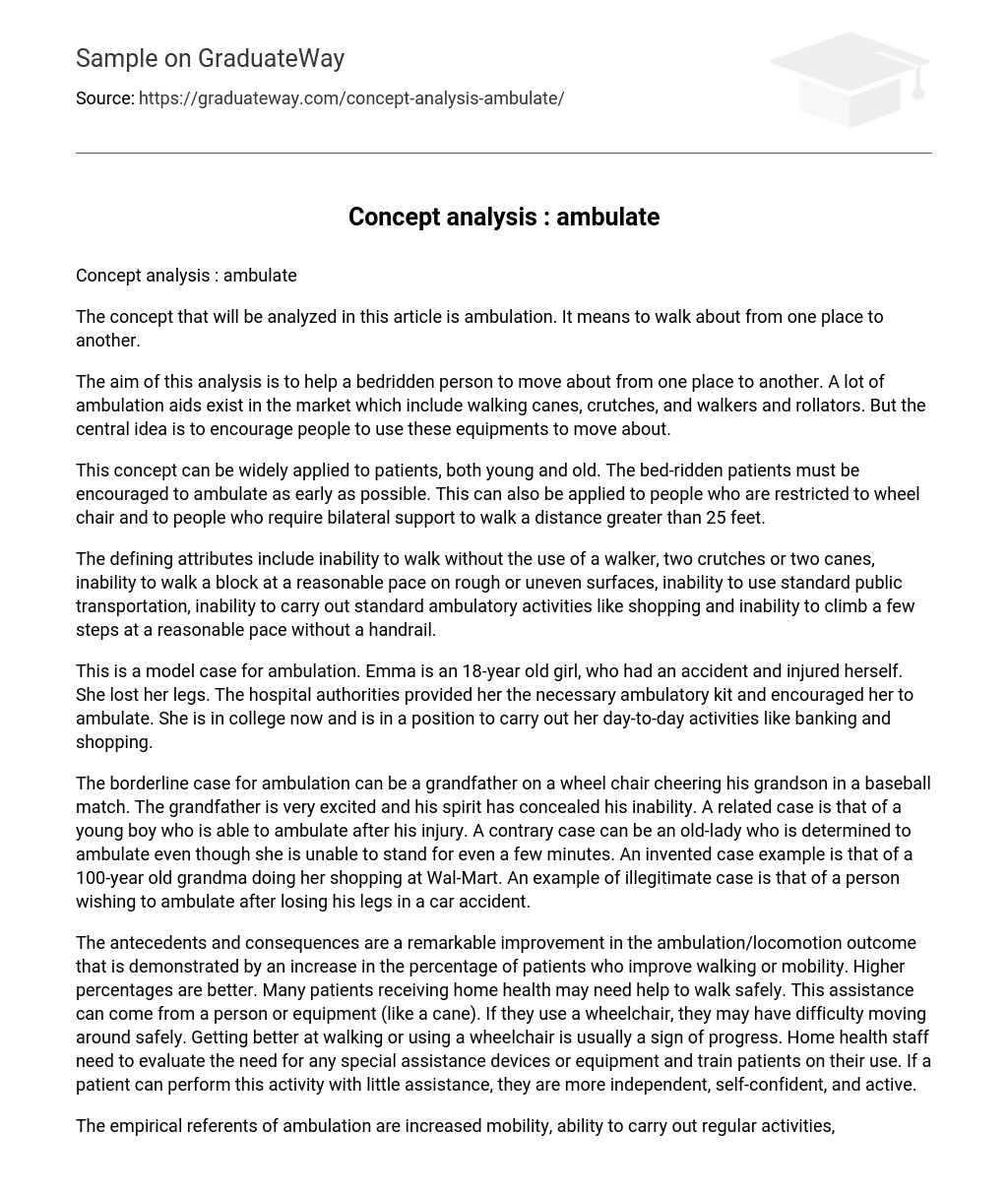The concept that will be analyzed in this article is ambulation. It means to walk about from one place to another.
The aim of this analysis is to help a bedridden person to move about from one place to another. A lot of ambulation aids exist in the market which include walking canes, crutches, and walkers and rollators. But the central idea is to encourage people to use these equipments to move about.
This concept can be widely applied to patients, both young and old. The bed-ridden patients must be encouraged to ambulate as early as possible. This can also be applied to people who are restricted to wheel chair and to people who require bilateral support to walk a distance greater than 25 feet.
The defining attributes include inability to walk without the use of a walker, two crutches or two canes, inability to walk a block at a reasonable pace on rough or uneven surfaces, inability to use standard public transportation, inability to carry out standard ambulatory activities like shopping and inability to climb a few steps at a reasonable pace without a handrail.
This is a model case for ambulation. Emma is an 18-year old girl, who had an accident and injured herself. She lost her legs. The hospital authorities provided her the necessary ambulatory kit and encouraged her to ambulate. She is in college now and is in a position to carry out her day-to-day activities like banking and shopping.
The borderline case for ambulation can be a grandfather on a wheel chair cheering his grandson in a baseball match. The grandfather is very excited and his spirit has concealed his inability. A related case is that of a young boy who is able to ambulate after his injury. A contrary case can be an old-lady who is determined to ambulate even though she is unable to stand for even a few minutes. An invented case example is that of a 100-year old grandma doing her shopping at Wal-Mart. An example of illegitimate case is that of a person wishing to ambulate after losing his legs in a car accident.
The antecedents and consequences are a remarkable improvement in the ambulation/locomotion outcome that is demonstrated by an increase in the percentage of patients who improve walking or mobility. Higher percentages are better. Many patients receiving home health may need help to walk safely. This assistance can come from a person or equipment (like a cane). If they use a wheelchair, they may have difficulty moving around safely. Getting better at walking or using a wheelchair is usually a sign of progress. Home health staff need to evaluate the need for any special assistance devices or equipment and train patients on their use. If a patient can perform this activity with little assistance, they are more independent, self-confident, and active.
The empirical referents of ambulation are increased mobility, ability to carry out regular activities, a feeling to self-confidence and independence leading to a happy life.





